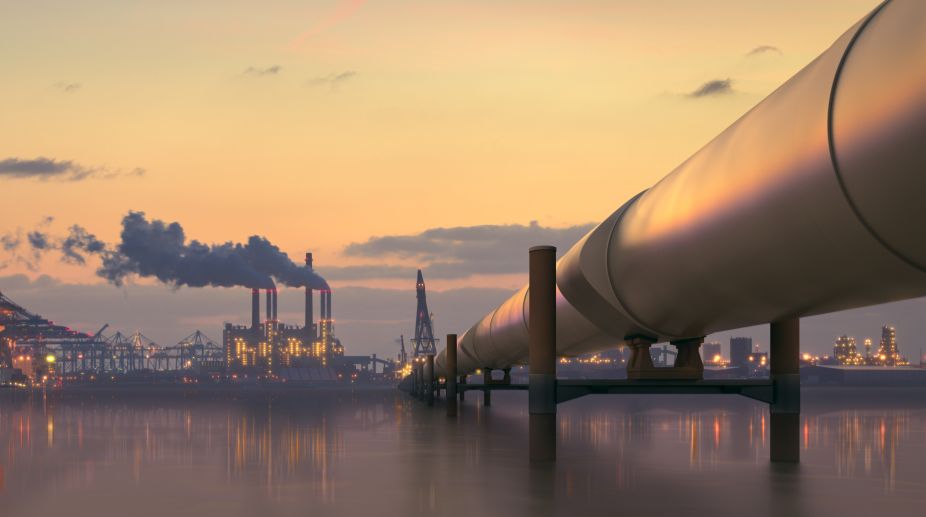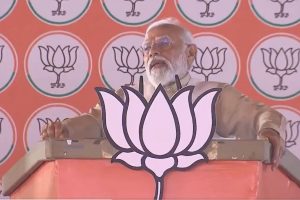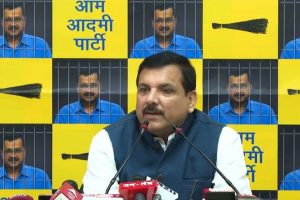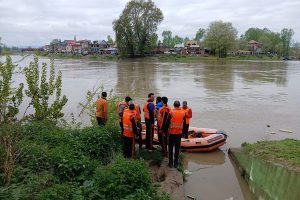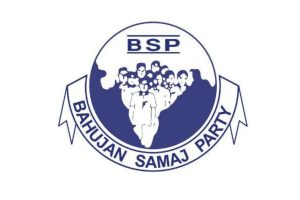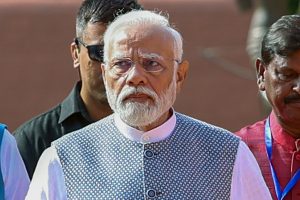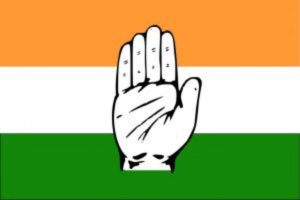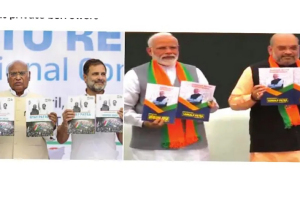India is yet to open the Myanmarese port of Sittwe for the Northeast despite setting 2015 as the deadline. On the other hand, China has already put in operation its much-awaited crude oil pipeline, parallel to the natural gas channel, from Kyaukphyu port of Myanmar’s western state of Arakan (also known as Rakhine) to Kunming in south-western China.
It is designed to carry crude oil from West Asia and Africa through Myanmar to feed the world’s second biggest oil consumer. Now the Chinese no longer need to depend on the troublesome cargo shipping of crude through the South China Sea for refineries in its Yunan province, run by the China National Petroleum Corporation.
The 771-km pipelines cost nearly $ 2.45 billion and are expected to carry 22 million tons of crude oil annually (around 442,000 barrels a day).
Once it becomes fully operational, the pipelines will be able to carry nearly six per cent of China’s total imports (as per a 2016 record).
A joint venture of CNPC (with 50.95 per cent stake) and Myanmar Oil and Gas Enterprise (more than 49.1 per cent) the pipelines almost divide Myanmar.
The country is in desperate need of finance and can claim a road-right fee of $13.81 million for both the oil and gas pipelines annually, along with a transit fee of $1 per ton of crude oil under a 30-year agreement. Moreover, Myanmar can take two million tons of crude oil annually from the line for its consumption.
The agreement to build the pipelines was signed in 2009 and construction started the next year. The gas pipeline was readied and made operational by 2015.
The oil pipeline, parallel to it across Myanmar, was also planned to start in the same year, but because of political differences between the two countries and also public resistance, the operation was delayed. However, after the recent visit of President Htin Kyaw to Beijing, the hurdles were removed.
The most trusted ally of Daw Aung Sun Suu Kyi, one who runs the democratically elected National League for Democracy government as a defacto chief, signed the operational agreement in the presence of Chinese President Xi Jinping on 10 April 2017.
Both sides agreed to make the oil pipeline operational at the earliest. The Earth Rights International, a non-governmental and non-profit organisation, has said that it was a welcome development for Chinese investors to officially operate the projects after a two-year delay.
However it argued that “there are still some major issues waiting to be solved, such as land compensation to communities, safety concerns, and ecological restoration at the project site”.
“The CNPC, as one of the main investors, should keep its commitment to health, safety, and the environment and solve these problems with effective consultation with local communities,” said Valentina Stackl, communications manager of the US-based ERI while responding to Asia Sentinel’s queries.
She added that when Myanmar was under military government, the affected communities had no choice but to remain silent even when their legal rights were violated.
After the election of the NLD, more and more communities have started standing up for their rights, not just on projects with Chinese investors, but all potential delinquent investors, said Stackl.
Of course, the CNPC claimed that the project was materialised after keeping an eye on the environment protection and land restoration.
Moreover, the emphasis was laid on community development activities like building of schools, hospitals, roads, bridges, power and water supply and telecommunication arrangements for the benefit of affected families across Myanmar.
The strategic relationship between China and Myanmar has improved but it may be noted that both the neighbouring countries had enjoyed a trusted diplomatic relationship for a long time.
The semi-democratic government in Rangoon (now known as Yangon) then recognised the People’s Republic of China in 1949 soon after the Chinese Communist Party led by Mao Zedong emerged victorious on all battle fronts. Later both the countries established a formal diplomatic relationship in 1950.
It was followed by the anti-Chinese uprising in 1967, when the agitating Burmese people targeted the Chinese embassy in Rangoon.
The Communist Chinese government took a hard stand against the General Ne Win-led Burmese regime. Later, when the South-east Asian country went under complete military rule, its ties with Beijing improved in the 1980s.
After the Burmese uprising that overthrew Ne Win’s regime and paved the way for the military junta to rule the country, China became friendlier to Burma as the international community started isolating the General Than Swe-led regime.
The military dictators rejected the outcome of the 1990 general elections, where Suu Kyi’s NLD won a landslide victory and even put the Nobel Peace Laureate under house arrest.
Slowly Myanmar became more dependent on China and it continued till a quasi-democratic government took power at Naypyidaw (Myanmar’s new capital) in 2011.
Former Myanmar President Thein Sein, who took some strong decisions against China, including the suspension of the Beijing-owned Myitsone hydropower project in Kachin province, tried to build closer ties with Europe and the USA.
The relationship survived with the initiative of Myanmar’s state counsellor and foreign minister Suu Kyi again. India, as a neighbouring democracy, was expected to have a better access to Suu Kyi, who stayed in New Delhi during her childhood days.
The democracy icon, on numerous occasions, remembered Mahatma Gandhi and that her father General Aung Sun had deep affection for India’s great freedom movement leader Netaji Subhas Chandra Bose, but even then New Delhi has not succeeded in reaching Naypyidaw allegedly because of India’s unclear foreign policies.
The Kaladan river and road project, starting from Arakan’s Sittwe port to Guwahati is waiting commissioning for years now. This project includes development of Sittwe port, dredging of the Kaladan River along with a road link from Kalewa in Burma to Aizawl in Mizoram and improvement of the Aizawl-Guwahati highway.
The multimillion Indian rupees project, conceived by India in 2003 and financed by it, is expected to encourage economic activities in the Burmese provinces of Arakan and Chin along with the eastern Indian states. Moreover, it was perceived as an opportunity for New Delhi to counter the increasing Chinese influences in Myanmar. But in reality, amid all contradictions, China continues to take advantage of the situation.
The Beijing administration, even playing the role of a peace broker in Myanmar, maintains a secret relationship with its rebel groups, including the United Wa State Army, Kachin Independence Army and Myanmar National Democratic Alliance Army.
China also allegedly supports a few Northeast India-based armed separatist groups, including the United Liberation Front of Asom (Independent) headed by Paresh Barua, who is operating from the China-Myanmar border, adjacent to Ruili of Yunnan province. This is not due to a revolutionary spirit but as a card against New Delhi for harbouring the Dalai Lama for decades.
The writer is Guwahati-based special representative of The Statesman

